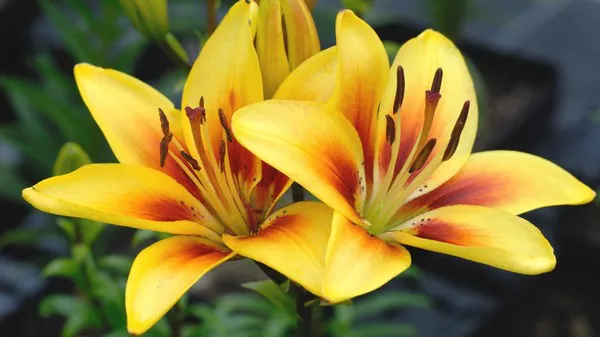While squash flowers may initially appear to wear the same sunny yellow hues, a closer examination reveals a fascinating division between the sexes. In this article, we delve into the critical distinctions between male and female squash flowers and their vital roles in the plant’s life cycle.
The Purpose of Squash Flowers
Squash flowers are not merely decorative; they play pivotal roles in nature and agriculture, contributing to the plant’s reproductive success and culinary enjoyment. Understanding the significance of these flowers sheds light on their importance in our ecosystem and on our plates.
Reproduction and Pollination
At their core, squash flowers are nature’s matchmakers, facilitating the reproduction of squash plants. They come in two distinct types: male and female. Male flowers, identifiable by their slender stems and distinct anthers, produce pollen. In contrast, female flowers feature a miniature fruit at their base, known as the ovary, and a stigma ready to receive pollen. The union of pollen from male to female flowers is essential for fruit formation, ensuring the plant’s next generation.
The Role of Pollinators
To achieve this vital task, squash flowers rely on pollinators such as bees, butterflies, and even the wind. Bees, in particular, are frequent visitors to squash blooms, collecting nectar while inadvertently transferring pollen between flowers. This intricate dance of pollination is critical for the production of healthy squash crops. Without pollinators, the chances of fruit development significantly decrease, underscoring the pivotal role of squash flowers in agriculture.
Attracting Pollinators
Squash flowers have evolved to attract pollinators through their striking appearance and enticing fragrance. Their vibrant colors, typically shades of yellow and orange, serve as visual beacons, guiding insects to their nectar-rich centers. Additionally, the sweet aroma emitted by the flowers acts as a natural lure, drawing pollinators from afar. In this way, squash flowers actively engage in a mutually beneficial relationship with their pollinator partners.
Culinary Delights
Beyond their reproductive role, squash flowers offer culinary pleasures for humans. These delicate blossoms are edible and feature prominently in various cuisines worldwide. Both male and female flowers find their way into the kitchen, each offering a unique flavor and texture. Male flowers are often preferred for their milder taste, while female flowers may contain a young, tender squash attached. From stuffed squash blossoms to fritters, these edible flowers add elegance and flavor to dishes, and we will explore some delectable recipes later in this article.
Cultural Significance
In addition to their biological and culinary roles, squash flowers hold cultural significance in various societies. They symbolize fertility and abundance in some cultures, becoming integral parts of rituals and celebrations. Their presence in traditional dishes reflects a deep connection between people and the land, honoring the generosity of the natural world.
Conservation and Biodiversity
Squash flowers, as key players in the pollination process, also contribute to biodiversity and ecosystem health. Their role in the reproduction of squash plants extends to other plant species in their vicinity. This interdependence ensures a thriving ecosystem, with diverse flora and fauna benefiting from the services of pollinators drawn to squash flowers. Preserving these flowers and their pollinator interactions is essential for maintaining biodiversity.


